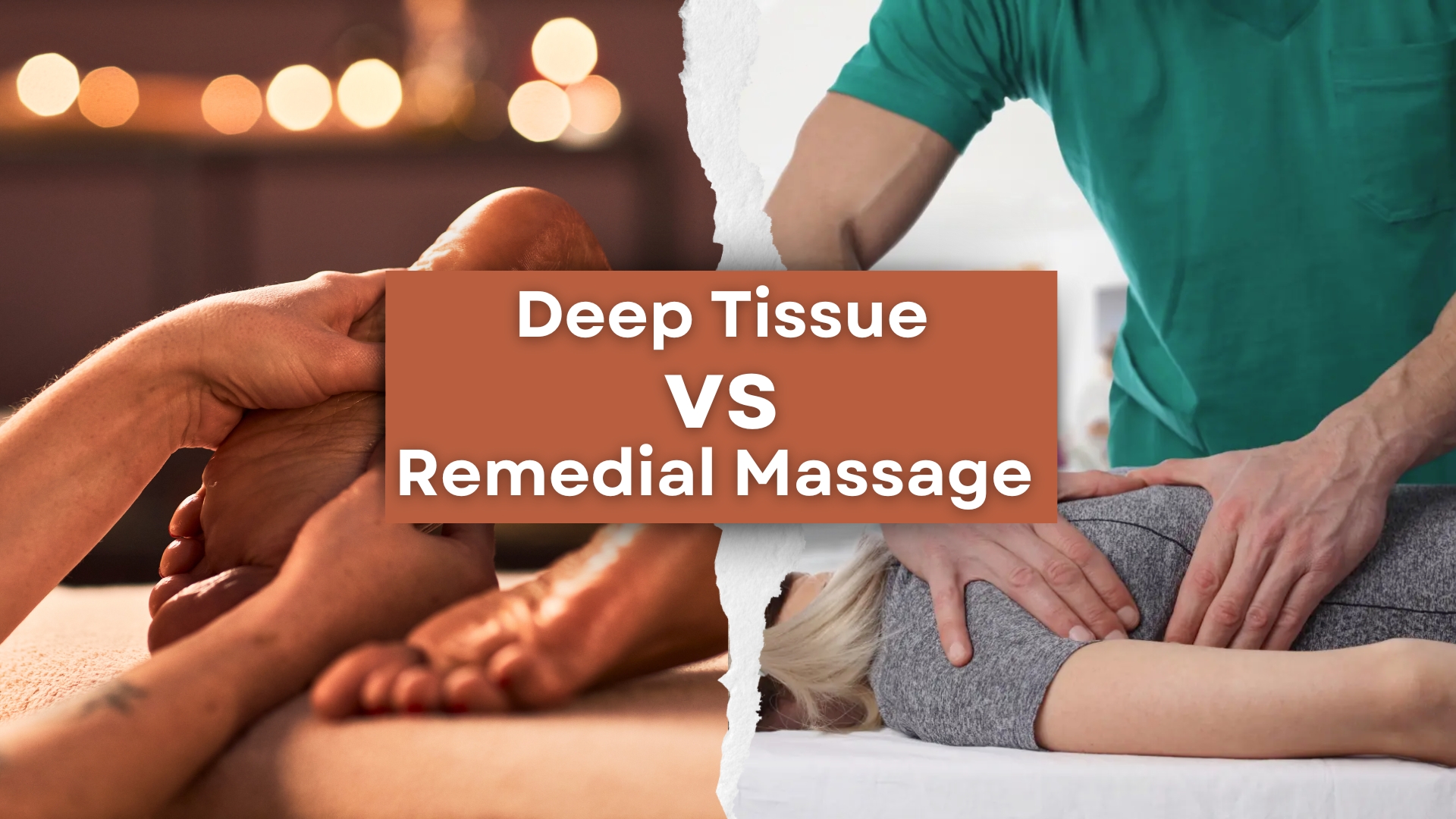Deep tissue massage is a feasible therapy option for different ailments like sports injuries and back pain. On the other hand, remedial massage serves as a supplementary form of therapy. It can aid individuals experiencing issues impacting their muscles, tendons, and bones.
Whether you are feeling muscle tightness, discomfort, or simply wanting to relieve work-related knots, a quality massage can provide the necessary relief from both stress and pain. Yet, deciding from the multiple massages available can be perplexing for some people.
People who participate in physical activities or professional sports are familiar with remedial massage and deep tissue massage, which aid in muscle recovery and reducing soreness. Many people mistakenly think deep tissue and remedial massage are identical, but they can have noticeable distinctions.
In addition, deep tissue massage is more intense and focuses on releasing tension in the deeper layers of muscle and connective tissue. Remedial massage is gentler and focuses on treating injuries and promoting relaxation.
Comprehending the difference can aid individuals in choosing the one that is most fitting for their requirements. What distinguishes them and do you require a therapeutic massage or a deep tissue massage?
Remedial and Deep Tissue Massage: The Difference
Remedial Massage
This massage is a form of supportive therapy, and its primary focus is on treating the specific issue area which is often caused by postural imbalance or muscle tension or soft tissue injury. Also, the remedial massage therapy often begins with a comprehensive assessment of the problematic muscles, postures, and ligaments.
Remedial massage offers relief for various muscle and joint issues. It can function as a general relaxation method on one side, and simultaneously be seen as an effective option for certain musculoskeletal issues on the other side.
Clients with extras cover can claim a rebate for remedial massage, as it is recognized by major health funds.
Deep Tissue Massage
This kind of massage focuses on the deeper tissue layers of muscles and fascia, as implied by its name. While Swedish massage techniques are utilized, deep tissue massage involves applying stronger pressure to address chronic muscle tension or knots. At times, the additional pressure can be uncomfortable, but clients often refer to it as a beneficial pain because it improves the therapeutic effects of the massage and aids in the recovery of patients from chronic pain and injury.
Deep tissue massage is commonly used as a holistic approach that does not target a particular problem, but rather treats the entire body. Health funds do not cover deep tissue massage, so clients cannot claim a rebate.
Last Few Words
Deep tissue massage is perfect for individuals seeking a full-body massage and the healing effects of strong pressure. Conversely, therapeutic massage focuses on specific issues and is best suited for individuals dealing with long-term pain and injuries that demand accurate diagnosis and specialized care. Most private health extras cover in Australia includes remedial massage, but not deep tissue massage.


